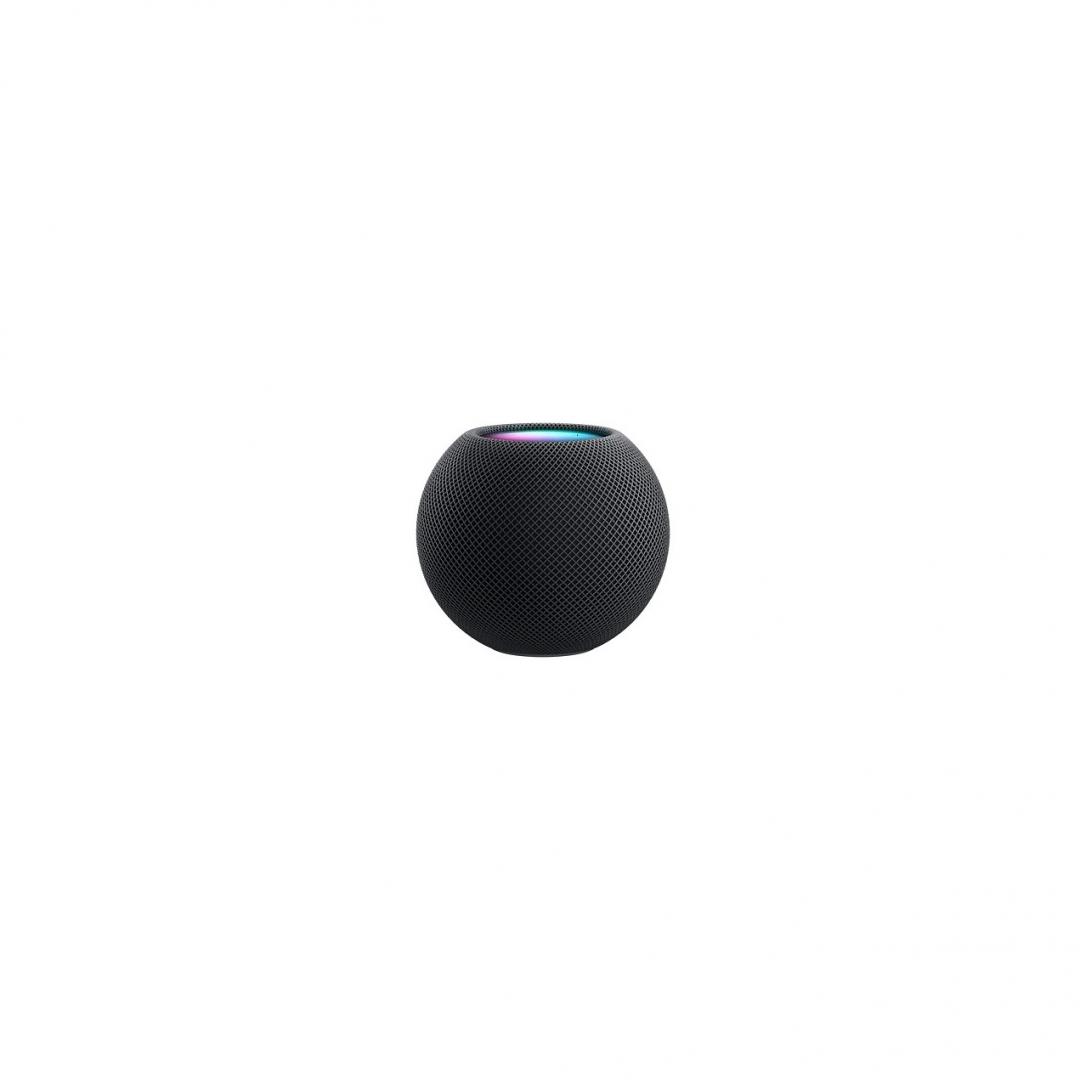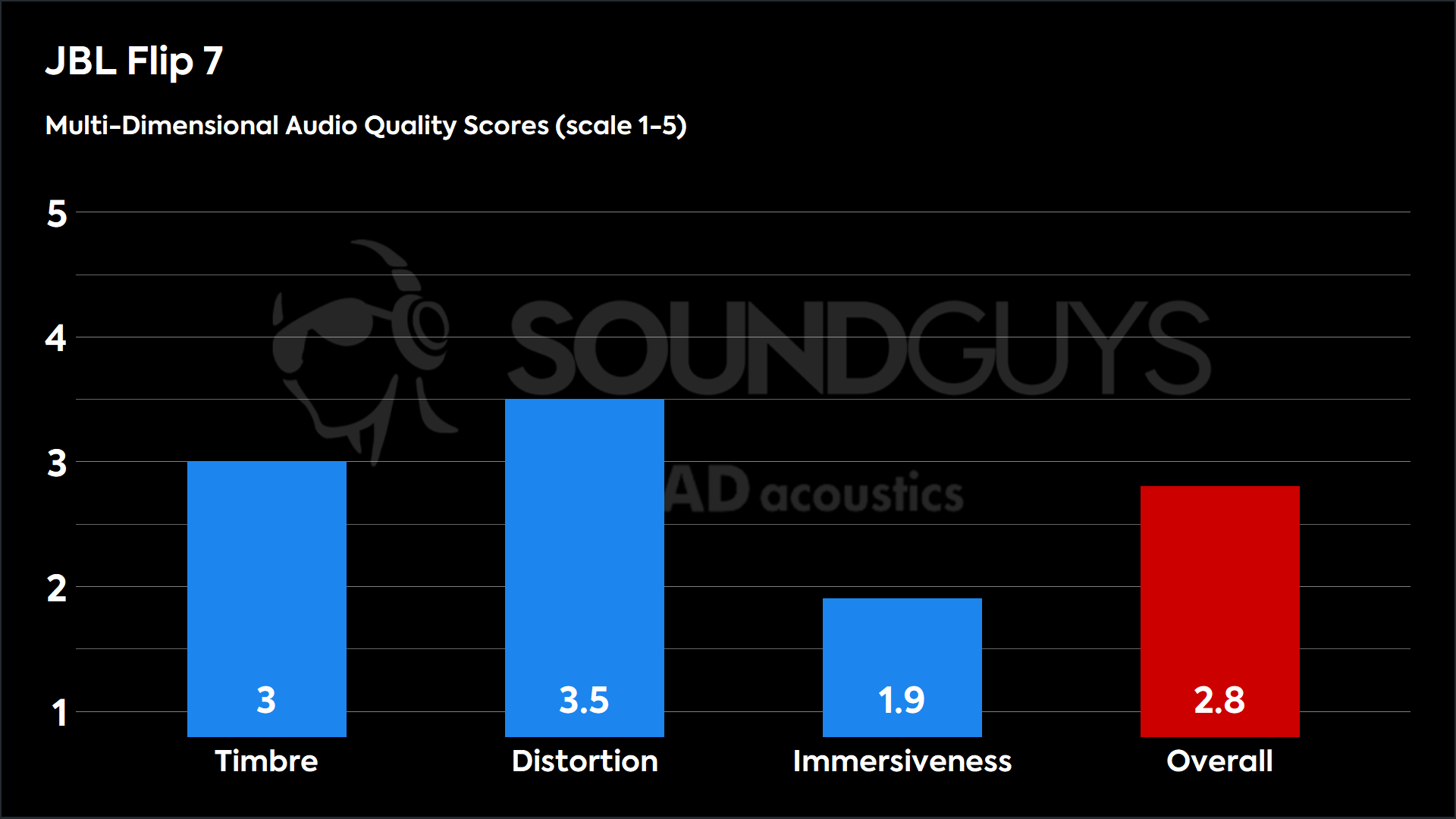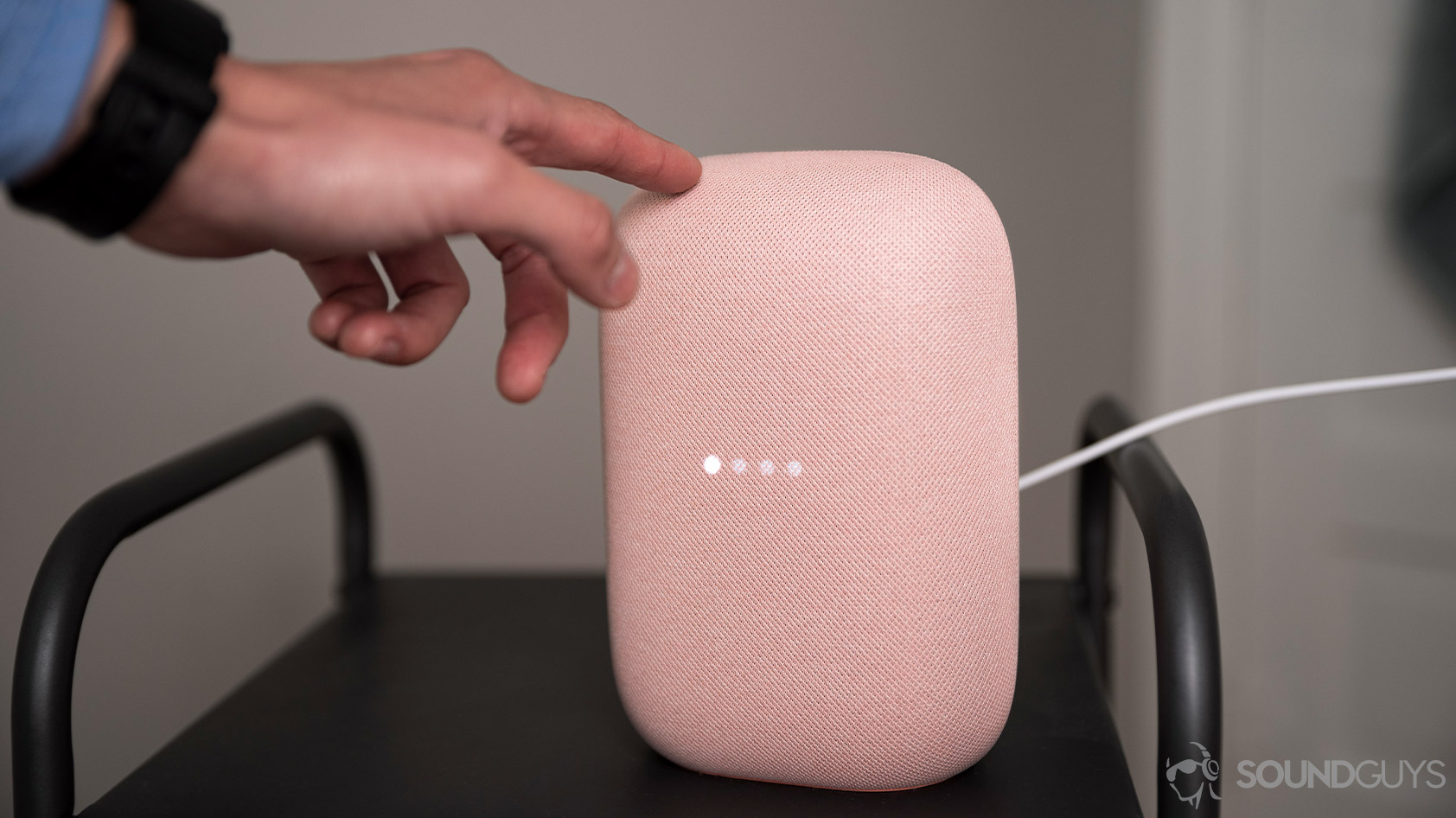All products featured are independently chosen by us. However, SoundGuys may receive a commission on orders placed through its retail links. See our ethics statement.
JBL Flip 7 vs Apple HomePod Mini: Portable or Smart?
Published onMarch 31, 2025


When it comes to compact speakers, both the JBL Flip 7 and Apple HomePod mini offer impressive features in small packages, but they serve very different purposes. The $149 JBL Flip 7 is built for on-the-go adventures with its rugged, water-resistant design, while the $99 HomePod mini is designed as a stationary smart speaker deeply integrated with Apple’s ecosystem. Let’s break down how these two compact audio solutions compare.
Editor’s note: this article was published on March 28, 2025, and is the first version of the article. Updates will follow as the market changes.
What’s it like to use the JBL Flip 7 compared to the Apple HomePod Mini?
The JBL Flip 7 maintains the familiar cylindrical design of its predecessors but comes with enhanced durability features. It’s now certified “drop-proof” from a height of one meter onto concrete and sports an improved IP68 rating (up from the Flip 6’s IP67), allowing submersion up to 1.5 meters for 30 minutes. The new “PushLock” system and included carabiner make it easy to attach to a backpack or hang from a branch while camping.
In contrast, the Apple HomePod mini is a stationary smart speaker designed to live indoors. Its softball-sized spherical design with mesh fabric coating makes it an elegant addition to any room. While it lacks official waterproofing (though it is humidity-resistant), the HomePod mini isn’t meant to leave your home. It requires constant power via its USB-C cable and wall adapter.
The biggest difference in using these devices comes down to their intended purposes. The Flip 7 is a take-anywhere Bluetooth speaker focused on music playback, while the HomePod mini is a smart speaker centered around Siri integration and controlling your Apple-based smart home.
How do you control the JBL Flip 7 and Apple HomePod Mini?
The JBL Flip 7 uses a standard button-based control system, while the Apple HomePod mini offers both touch controls and extensive voice commands via Siri.
| Action | Power button | Bluetooth button | Auracast button | Play button | Volume + | Volume - |
|---|---|---|---|---|---|---|
| Action Press 1x | Power button Turn on device | Bluetooth button Enter pairing mode | Auracast button Connect with other JBL Auracast supported speakers | Play button Play / Pause | Volume + Volume up | Volume - Volume down |
| Action Press 2x | Power button | Bluetooth button | Auracast button | Play button Next track | Volume + | Volume - |
| Action Press 3x | Power button | Bluetooth button | Auracast button | Play button Previous track | Volume + | Volume - |
| Action Press and hold | Power button | Bluetooth button | Auracast button | Play button Engage audio over USB (while inserting the cable at the same time) | Volume + | Volume - |
| Tap center | Play/pause music or Siri |
|---|---|
Double-tap center | Skip |
Triple-tap center | Skip back |
Touch and hold center | Siri |
Tap or hold + or - | Volume up/down |
The HomePod mini’s voice control capabilities through Siri are a major differentiator. They allow you to play music, control smart home devices, set timers, answer questions, send intercom messages, make calls, and more—all hands-free. The speaker’s four microphones can hear commands even with music playing at full volume. The Flip 7 has no voice control or microphone capabilities, relying entirely on its physical buttons for operation.
Should you use the apps of either JBL Flip 7 or Apple HomePod Mini?
The JBL Portable app isn’t required to use the Flip 7, but it’s definitely worth downloading if you want to access its best features. Through the app, you can customize sound with the new 7-band EQ, pair two speakers for stereo playback, manage “Party Together” for multi-speaker setups, and activate “PlayTime Boost” to extend battery life. The sound customization alone makes it worth installing.
The Apple Home app isn’t optional for HomePod mini users—it’s essential. You’ll need it for initial setup, managing HomeKit accessories, configuring multi-room audio, and setting up the intercom feature between HomePods. The app serves as command central for the HomePod mini and its integration with your broader Apple ecosystem, making it indispensable rather than just a nice-to-have add-on.
How do the JBL Flip 7 and Apple HomePod Mini connect?
The JBL Flip 7 connects primarily via Bluetooth 5.4, an upgrade from the Flip 6’s Bluetooth 5.1. It’s designed to pair with any Bluetooth-capable device regardless of operating system. The Flip 7 also introduces audio over USB, allowing for lossless playback from compatible music services when connected via USB-C cable.
The Apple HomePod mini operates wirelessly over Wi-Fi, requiring your phone or laptop to be on the same network. It does utilize Bluetooth 5.0, but only for facilitating Apple AirPlay and the Handoff feature, not for direct Bluetooth streaming from non-Apple devices. The HomePod mini requires an iPhone or iPad for setup and is designed to work almost exclusively within the Apple ecosystem.
For music streaming, the JBL Flip 7 works with any streaming service on your device. In contrast, the HomePod mini has direct integration with Apple Music and Apple Podcasts, while services like Spotify require streaming through AirPlay rather than direct control via voice commands.
Is battery life better on the JBL Flip 7 or Apple HomePod Mini?
The JBL Flip 7 offers approximately 14 hours of playback on a single charge under normal operation, with the option to extend to 16 hours using the “Playtime Boost” feature (which reduces bass frequencies to conserve power). This makes it ideal for day trips or outdoor gatherings.
The Apple HomePod mini doesn’t have a battery at all—it requires constant power from its USB-C cable and wall adapter. As a stationary smart speaker, it’s designed to be permanently plugged in at a fixed location in your home.
In this category, the JBL Flip 7 is the clear winner if portability is important to you, while the HomePod mini’s always-on design is advantageous for a smart home hub that needs to be continuously available.
Does the JBL Flip 7 sound better than the Apple HomePod Mini?
Both speakers deliver impressive sound quality considering their compact sizes, but they have different audio characteristics.
The JBL Flip 7 produces a relatively full sound with decent bass response for its size. It features a mono speaker setup with passive radiators that help enhance low frequencies. Through the JBL Portable app, users can access a 7-band customizable EQ to tailor the sound to their preferences.
The Flip 7 scores well on the Multi-Dimensional Audio Quality Score (MDAQS) algorithm with a Timbre score of 3.0, a strong Distortion score of 3.5, but a low Immersiveness score of 1.9 (expected for a mono speaker), resulting in an Overall score of 2.8.

The Apple HomePod mini emits sound in a 360-degree field and packs a full-range driver with dual passive bass radiators into its spherical design. We found that it produces a surprisingly good bass response for its size and handles various music genres well, reproducing vocals and instruments clearly. The HomePod mini doesn’t have customizable EQ settings like the Flip 7, but it automatically adjusts its output based on its placement in a room. We did not submit the HomePod Mini for MDAQS results at the time of the review.
In terms of stereo capability, both speakers are primarily mono devices when used individually. However, you can pair two HomePod minis for stereo sound, and similarly, you can connect two Flip 7s for stereo playback using the JBL Portable app.
While both speakers sound good for their size, the JBL Flip 7’s customizable EQ gives users more control over their listening experience, which might appeal to those who want to fine-tune their sound.
Should you get the JBL Flip 7 or Apple HomePod Mini?
These two speakers serve very different purposes, so the choice depends entirely on your needs.
Choose the JBL Flip 7 if:
- You need a portable speaker for outdoor adventures
- You want a rugged, waterproof design
- You value customizable sound with the 7-band EQ
- You use multiple device platforms (Android, iOS, Windows, etc.)
- You need battery-powered operation
- You want to be able to clip your speaker to a backpack or hang it
Choose the Apple HomePod mini if:
- You’re deeply invested in the Apple ecosystem
- You want Siri voice assistant integration
- You need a smart home hub for Apple HomeKit
- You value the intercom and multi-room audio features
- You want seamless integration with your iPhone
- You prefer a stationary speaker for home use
The decision largely comes down to how you plan to use the speaker. The Flip 7 excels as a take-anywhere Bluetooth speaker focused on music playback in various environments, while the HomePod mini serves as a hub for your smart home and provides easy access to Siri and Apple services.

Best HomeKit speaker
Lots of fun colors
What should you get instead of the JBL Flip 7 or Apple HomePod Mini?

If neither speaker quite meets your needs, there are several alternatives to consider.
Instead of the JBL Flip 7, consider:
- JBL Charge 6 ($199 at Amazon) – Offers more output and bass response in a larger package with many of the same features as the Flip 7
- Anker Soundcore Boom 2 ($89.99 at Amazon) – A more affordable option with built-in LED lights, a USB-A charging port, and customizable sound
Instead of the Apple HomePod mini, consider:
- Amazon Echo (Gen. 4) ($99 at Amazon) – Features Alexa integration, a microphone mute button, and works well with Amazon services
- Google Nest Audio ($99.99 at Best Buy) – Offers Google Assistant, features like Ambient IQ and Media EQ, and works well with YouTube Music and Chromecast
- Apple HomePod (2nd generation) ($299 at Adorama) – A larger, more substantial Apple smart speaker with better sound quality
Each alternative offers its own set of features and ecosystem compatibility, so consider what aspects are most important for your specific needs before making a purchase.